How Long Should You Stay at a Wedding? Understanding the Etiquette
When attending a wedding, you might wonder about the proper time to stay to honor the couple‘s special day without overstaying your welcome or leaving too early. The length of your stay at a wedding is guided by the series of events and the reception’s atmosphere. Typically, a wedding can span several hours, and it’s thoughtful to consider both the effort the couple has put into their wedding day timeline and your own commitments.
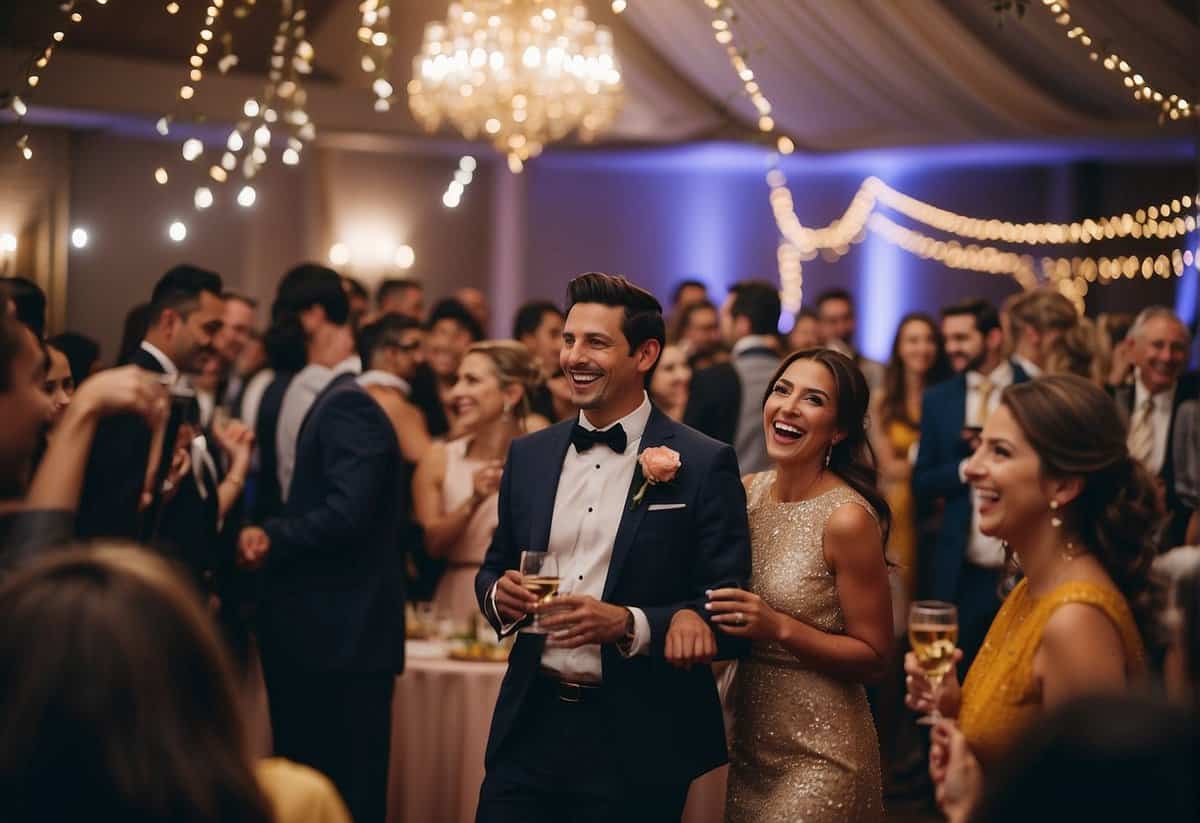
It’s usually expected that you’ll witness the couple’s vows during the wedding ceremony, which often lasts about half an hour, and then partake in the subsequent celebrations, which frequently include a cocktail hour, dinner, and dancing. If it’s an evening wedding, the festivities might continue well into the night. Staying through the main events, like the first dance, toasts, and the cutting of the cake, shows you’re engaged in the experience and respectful of the traditions the couple has incorporated into their day. If you’re invested in wedding planning or just want to be a considerate guest, understanding these social cues will make your experience—and the couple’s—more pleasant.
Key Takeaways
- Attending the full ceremony and main events at the reception is a sign of respect.
- A typical wedding reception involves several key traditions worth staying for.
- Adhering to the wedding day timeline is considerate of the couple’s efforts.
Wedding Ceremony Essentials
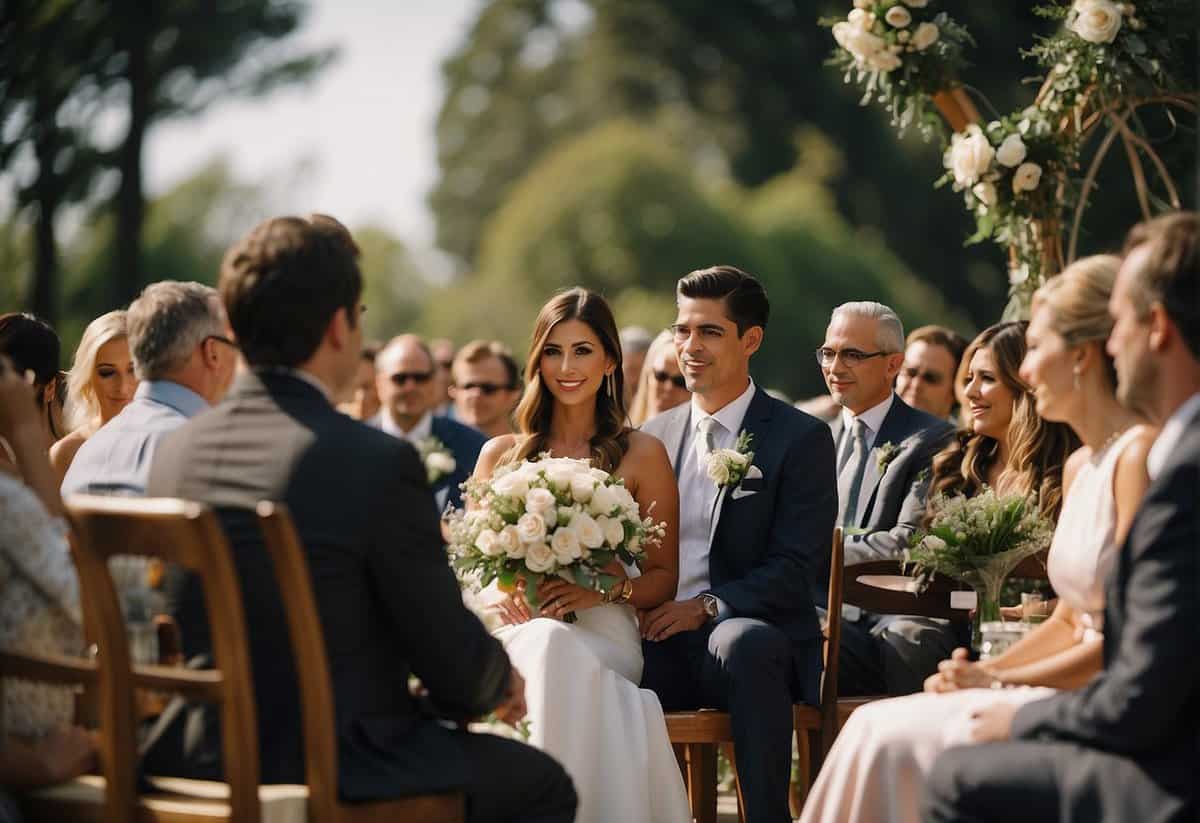
When planning your attendance at a wedding, it’s crucial to understand the distinct parts of a wedding ceremony and the roles everyone plays to ensure you fully enjoy the event and respect the couple’s special moment.
Understanding the Ceremony Timeline
The sequence of a wedding ceremony often follows a traditional pattern, but can vary based on the couple’s preferences. Initially, guests arrive and take their seats, followed by the introduction of the wedding party. Key moments include the first look or reveal of the bride, alongside special readings or songs, vows exchange, and the much-anticipated “I dos.” It’s common for a ceremony to last around 30 minutes, but it can extend if there are additional elements like performances or cultural rituals. For better context, a resource like Brides provides a full breakdown of the perfect wedding day getting-ready timeline.
Roles and Responsibilities
- Guests: Your main responsibility is to arrive on time, be present during key moments, and follow the guidance provided by the wedding planner or ushers.
- Wedding Planner: Leads the coordination for a seamless sequence, from guests seating to timing the walks down the aisle.
- Wedding Venue Staff: Ensures the venue is prepared and everything runs in sync with the planner’s timeline.
- Photographer: Captures the entire ceremony, from introductions to the final kiss and first steps out as a married couple.
ItalicFollow these guidelines to show your support and appreciation for the couple’s union. Italic
Navigating the Reception

Your journey through a wedding reception is marked by key events that create a festive and structured celebration. From the moment you witness the wedding party’s grand entrance to the final dance, you’ll be part of a well-orchestrated series of activities that blend tradition with fun.
Grand Entrance and Cocktail Hour
After the ceremony, your first experience at the reception will be the Grand Entrance. This is when the wedding party makes their debut to the guests, often kicked off by the MC or DJ announcing names. It’s a lively start that sets the tone for the evening. Following the entrance is the Cocktail Hour, where you’ll enjoy drinks and light appetizers. Whether it’s an open bar or a selection of signature cocktails, this is a time for mingling and anticipation of the night ahead.
- 6:00 PM: Wedding Party Grand Entrance
- 6:15 PM: Start of Cocktail Hour
Dinner and Toasting
Dinner may be a seated dinner or buffet style, but either way, it’s a chance to savor delicious food and engage in conversations with fellow guests. During or after dinner, the toasts begin, often led by the father of the bride, followed by other key members of the wedding party. Expect heartfelt and humorous speeches that honor the couple.
- 7:00 PM: Dinner Starts
- 7:45 PM: Toasting by Father of the Bride and Wedding Party
Dancing and Entertainment
Post-dinner, the first dance takes the spotlight on the dance floor, usually followed by the father-daughter and mother-son dances. Then, the party really starts with all wedding guests invited to dance. Dancing and entertainment can stretch for hours and might be led by a band or DJ. Don’t miss out on the fun traditions like the bouquet toss or garter toss. The night often peaks with the cake cutting, a sweet symbol of the couple’s new life together.
- 8:30 PM: First Dance and Parent Dances
- 9:00 PM: Dance Floor Opens to Guests
- 10:00 PM: Cake Cutting Ceremony
Special Moments and Traditions
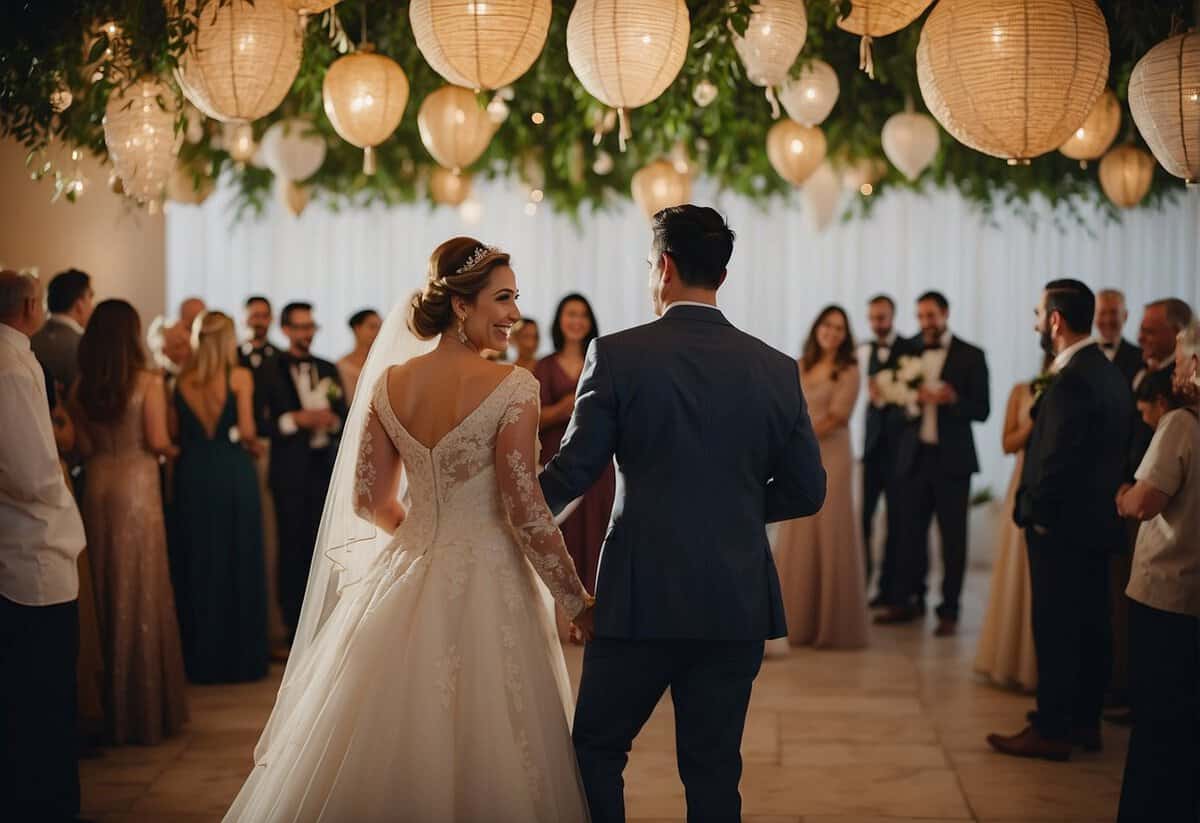
Your presence at a wedding means you’ll witness a series of memorable moments and traditions that are both meaningful and photogenic. These timeless customs can vary but often include the following highlights that punctuate the celebration.
Cake Cutting and Parent Dances
Cake Cutting: As the main meal winds down, it’s time for you to enjoy the cake cutting ceremony. It’s a symbol of the newlyweds’ union and shared future. Typically, you’ll see the couple make a cut together, often with a special song playing in the background. Be ready for the photographer to capture this sweet moment.
Parent Dances: After the cake cutting, attention often shifts to the dance floor for parent dances. It’s a heartwarming tradition where newlyweds share a dance with their parents. The bride and her father and the groom and his mother usually have their turns on the dance floor, to the backdrop of sentimental music.
Bouquet Toss and Garter Throw
Bouquet Toss: Grab your spot near the dance floor when it’s time for the bouquet toss. Typically, all the single women gather, and the bride tosses her bouquet into the crowd, with the belief that the catcher will be the next to marry.
Garter Throw: Similarly, the garter toss is a playful tradition for the single men. The groom removes the garter from the bride’s leg, often with a bit of a show, and then tosses it to the unmarried men. According to tradition, the catcher will be the next gentleman to tie the knot.
Throughout these special moments, you’ll find plenty of opportunities for toasting to the couple, hitting the dance floor in your best wedding outfit, and enjoying the night with sparklers or other festive celebrations. Don’t miss out on making your own memories while honoring these long-standing wedding traditions.
Concluding the Wedding
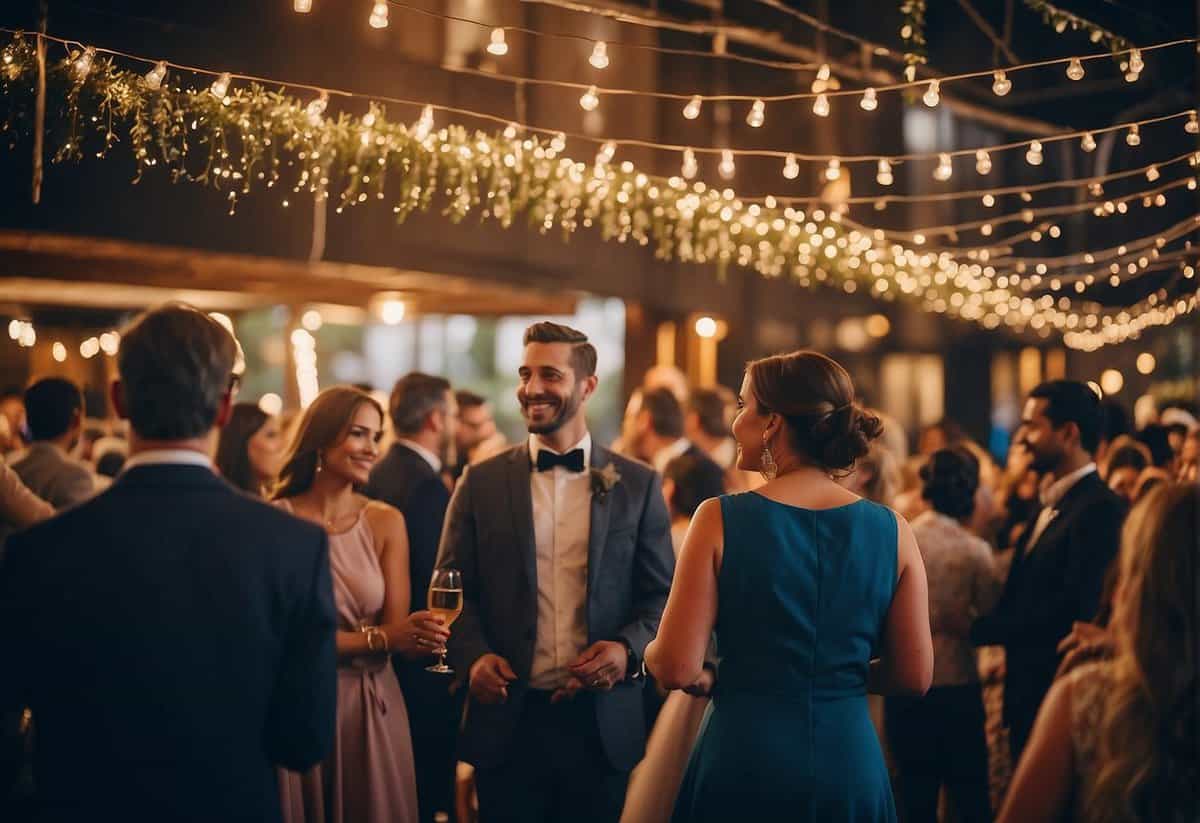
Wrapping up the festivities of your special day has its own customs and practicalities to consider, ensuring a smooth transition from a joyous celebration to a fond farewell.
The Last Dance and Grand Exit
Your last dance signifies the close of your wedding reception and a final moment in the spotlight before parting ways with your guests. Choose a meaningful song that resonates with your journey as a couple. After the last dance, the grand exit is an exciting tradition where guests line up to send you off into married life. Whether you opt for sparklers, confetti, or bubbles, this is a prime opportunity for a memorable photo. Organize the details with your wedding coordinator or venue coordinator to ensure timing aligns with the venue’s schedule and any noise restrictions.
Post-Wedding and After-Party
Should your budget and wedding reception timeline allow, an after-party can extend the celebration for you and a smaller group of guests, typically the younger crowd or close friends. The number of guests who RSVP’d for the evening can inform the size of your after-party – consider mentioning it on your wedding website for a headcount. Opt for a casual cocktail party at a nearby bar or a designated hotel suite. While not all guests will join, an after-party is a way to wind down the event informally. Remember, catering isn’t typically expected, but offering some late-night snacks or a beverage is a thoughtful touch.
Frequently Asked Questions
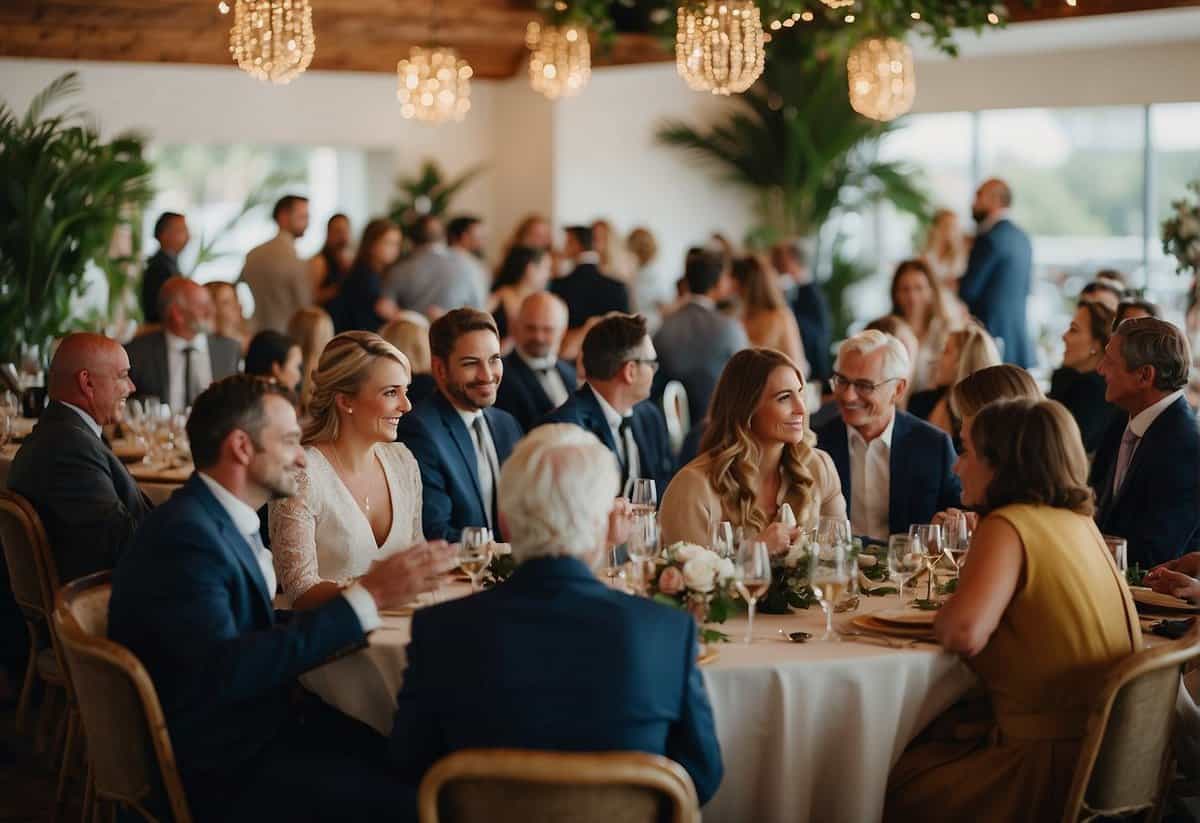
In this section, you’ll find answers to common questions about the duration of wedding festivities and the etiquette surrounding your time at the celebration.
What is the typical duration of a wedding ceremony and reception combined?
Typically, a wedding ceremony might last from 30 to 60 minutes, with receptions often ranging from 4 to 6 hours. The total event can span 5 to 7 hours.
What is considered an acceptable time to depart from a wedding?
It’s generally polite to stay at least until the cake is cut, which is a traditional symbol that guests are free to leave without raising eyebrows.
Is it impolite to leave a wedding reception before it ends?
Leaving before the formal end of a wedding reception can be seen as impolite, especially if it’s before key events like the cake cutting or final dances; unless you’ve informed the couple beforehand or have an urgent matter.
How many hours do guests generally stay at a wedding celebration?
Guests usually stay for the entirety of the reception, which can last around 4 to 6 hours. This is a normal timeframe for enjoying the full event.
Can you explain the 30 5-minute rule often mentioned in wedding etiquettes?
The 30 5-minute rule suggests planning for 30 minutes of pre-ceremony mingling, with approximately 5 minutes for each major wedding timeline item (like entrance, speeches, first dance).
Is a 5-hour wedding reception considered too lengthy?
A 5-hour reception is not considered too lengthy; it’s quite standard and allows ample time for dining, dancing, and celebrating with the newlyweds.

